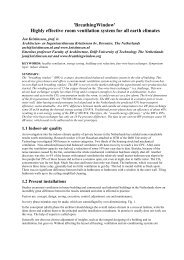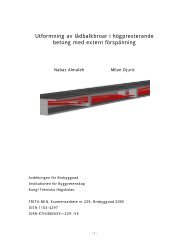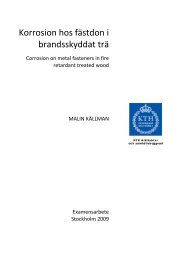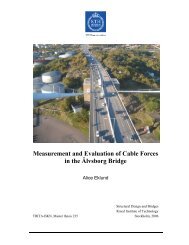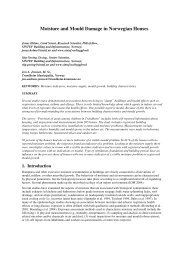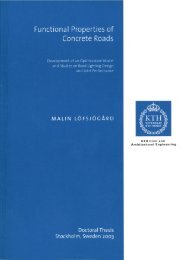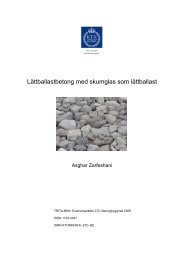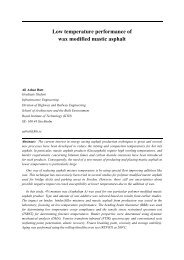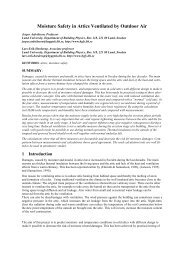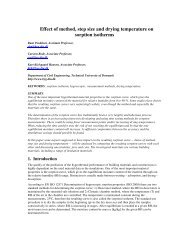Read complete article here
Read complete article here
Read complete article here
Create successful ePaper yourself
Turn your PDF publications into a flip-book with our unique Google optimized e-Paper software.
Table 1: Driving rain load at the surface of the most exposed façade orientation and average hygrothermal<br />
conditions at the selected locations in North America and Europe.<br />
Location<br />
Driving rain load<br />
(façade orientation)<br />
Rel. Humidity Temperature (annual/monthly mean)<br />
(annual mean) Year January July<br />
Wilmington 186 l/m²a (S) 73% 16.1 °C 5.7 °C 24.9 °C<br />
Hannover 160 l/m²a (W) 80% 8.6 °C -0.1 °C 17.1 °C<br />
Lisbon 193 l/m²a (W) 75% 15.6 °C 9.8 °C 20.7 °C<br />
Locarno 133 l/m²a (E) 72% 11.5 °C 2.1 °C 22.2 °C<br />
Vienna 112 l/m²a (W) 73% 10.4 °C 0.1 °C 20.6 °C<br />
4.2 Simulation results<br />
The North American damage cases have shown that the substrate layer to which the ETICS is applied,<br />
experiences the most critical moisture conditions in the assembly. T<strong>here</strong>fore the moisture content of the OSB<br />
sheathing is monitored in the present study. Fig. 2 displays the temporal variations in OSB moisture under three<br />
different scenarios. Assuming perfect workmanship (no leaks) results in permanently dry conditions (MC < 13<br />
M-%) no matter what vapour retarder is applied to the interior side of the stud wall. If rainwater leaks are present<br />
the OSB moisture content will rise in wintertime with extended drying spells in summer. However, when t<strong>here</strong> is<br />
only very little vapour diffusion towards the interior because of the rather impermeable vapour retarder (PEfilm),<br />
the drying potential is limited and long-term moisture accumulation may occur (MC > 25 M-% after 3<br />
years). By replacing the PE-film with the humidity controlled PA-film the drying potential is enhanced enough<br />
to assure long-term OSB moisture conditions below 18 M-%.<br />
Fig. 2: Temporal variations of OSB sheathing moisture content beneath the ETICS in Wilmington for the<br />
standard case with and without rainwater leakage and with a PA-film replacing the PE-film as vapour<br />
retarder of the stud wall.<br />
When the simulations are repeated for the coldest location considered (Hannover) t<strong>here</strong> is a different picture<br />
(Fig. 3). Again, when t<strong>here</strong> is no leak t<strong>here</strong> is no problem. However, when t<strong>here</strong> is a leak the OSB moisture<br />
content will repeatedly exceed 20 M.-% even if the dying potential to the interior is enhanced by the PA-film. An<br />
explanation for the different behaviours of the investigated building assemblies investigated under different<br />
climate conditions lies in the divergence in vapour gradients. The high summer time temperatures in Wilmington<br />
result in a considerable inward vapour drive making efficient use of the drying potential provided by the



